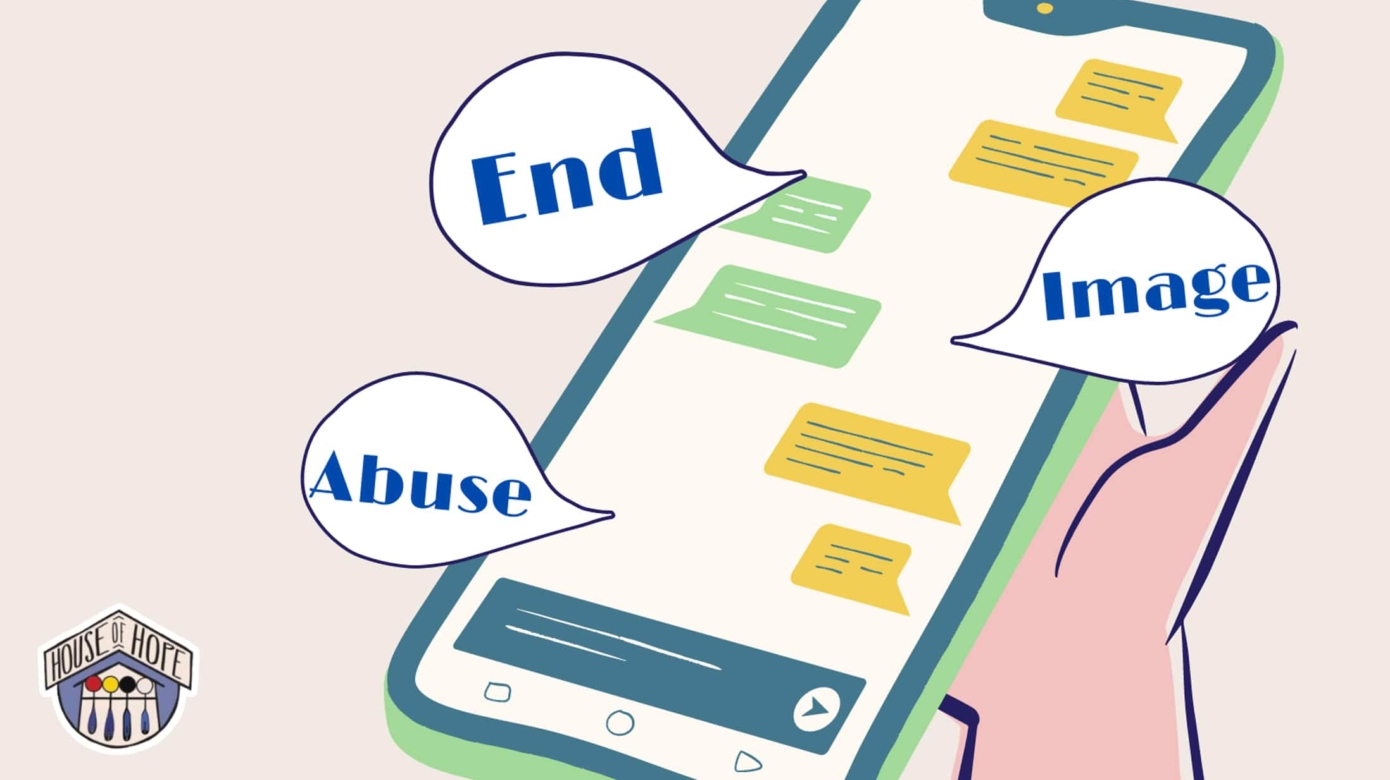By Kayla Woody, House of Hope DVPI Prevention Specialist
With the help of the internet, billions of photos and videos are shared every second. Apps like TikTok and Instagram allow users to capture every moment of their day, sharing those with the world. This does not come without a price. Once uploaded, these images are irreversible and can be used as a form of power and control against a person.
Image-based abuse, sometimes called “revenge porn” or “non-consensual pornography” is the sharing of sexually-graphic images without the consent of the person(s) in the image. Sextortion is the threat to disclose sexually-graphic images of a person unless that person complies. These images can include:
- A nude person or exposed sexual parts of a person
- A person engaged in a sexual act
- A person showering or bathing
- The face of a person digitally added to a sexualized image
This type of abuse is becoming more common as a tactic of intimate partner violence. Research is beginning to shed light on the issue. A 2019 nationwide survey conducted by Florida International University Psychology Assistant Professor Asia Eaton found 1 out of every 12 respondents claimed to have been a victim of nonconsensual pornography.
When this type of abuse happens in intimate relationships, victims can be manipulated and controlled with threats to share images or videos. The effects of this type of abuse can have huge impacts. Many are re-victimized due to shaming by others that come in contact with the images. Some respond with comments like, “It’s your fault that you allowed the photo to be taken,” or “You put yourself in that position.” Many images are obtained without consent from victims, and whether or not the person agreed to the photo, they did not consent to share it. Abuse is never the victim’s fault. There needs to be a shift in the responsibility of those actions to the perpetrator.
For someone that has experienced image-based abuse, the uncertainty of how to handle the situation is overwhelming. Fortunately, there are steps to take that can remove images and hold the perpetrator accountable. Victims can:
- Document what is happening by printing any harassing emails or texts
- Try to capture the date and time the image was posted
- If the website shows who posted the image, take a screenshot
- Report the content to the site it was posted to
- Submit a request to search engines like Google or Bing to remove the image from any future searches
- Report the abuse to law enforcement
- Seek support from local domestic violence services
If you or someone you know is experiencing intimate partner violence, stalking, and/or sexual assault and would like more information, please contact the CPN House of Hope at 405-275-3176 or visit us online at cpnhouseofhope.com or on Facebook.

